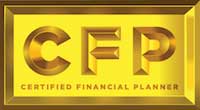
Actions For CFPs® To Build Trust With Clients
The Certified Financial Planner Board Of Standards’ first principle in its Code of Ethics is integrity. The code states – “Integrity demands honesty and candor which must not be subordinated to personal gain and advantage. Certificants are placed in positions of trust by clients, and the ultimate source of that trust is the certificant’s personal integrity.”
The problem with integrity and trust is that they are nearly impossible to see and measure. As Harry Beckwith noted in “Selling The Invisible”, when you sell an intangible product clients often make choices based on tiny impressions that have little to do with your service.
However, there are visible ways to build trust with prospects and clients. Below are the nine components of convincing people you are trustworthy.
1. Authenticity – Authenticity is communicating in your natural fashion, without corporate speak.
Action Step – Go thorough all major pieces of material your clients see and edit them to sound like a human being. That includes your website, newsletter and reports. Do not use jargon, keep things simple.
2. Believability – Believability is the client’s perception of your business matching up with your words. If you are a great advisor you should have testimonials, stories and examples of where you have helped people in a similar situation. Public testimonials are prohibited by the regulators but you can use an existing client as a reference.
Action Step – Ask an existing happy client to act as a reference for prospects.
3. Credibility – Credibility is “the quality of being trusted and believed in“. This is primarily communicated by credentials such as your CFP®. But it also done by how you look (i.e. how you dress, your office, your experience).
Action Step – Make it clear you are a CFP® on all major communications. Talk about your past experience on your website and get professional pictures taken. Pictures of your office are also a plus. Finally, look the part! Would you trust yourself with a multi-million dollar account?
4. Familiarity – Harry Beckwith makes it clear in his book that “familiarity” is a major factor in client decision making. Familiarity breeds trust because if someone has heard from/about you various times you appear to be a grounded organisation, here to stay. Not fly by night.
Action Step – Create a monthly newsletter for prospects and clients. Build a list of people who follow your work.
5. Feasibility Of Relationship – You need to be easy to do business with otherwise people will not bother.
Action Step – 1) Publicize your fees and minimums. 2) If you offer a free consultation publicize it and let people know what happens during the meeting. 3) Let people know what is involved in becoming a client.
6. Safety – Make people feel safe doing business with you.
Action Step – Make it clear in your communications that you work with a reputable custodian and/or broker. Talk about your security procedures to protect client information, as well as your disaster recovery plan.
7. Comfort – Once someone becomes a client, they want to feel comfortable doing business with you. If you visit clients at home, let them know. If you can offer great advice without digging into all elements of their life, let them know. People want to feel comfortable.
Action Step – Develop one idea to make your clients feel more comfortable. How can you make the financial planning experience more enjoyable?
8. Superiority – Superiority is appearing greater than the competition. Traditionally, this is done by AUM or number of clients. But you can use credentials, experience or specialization (e.g. only working millennials).
Action Step – List three ways you are superior to your competition and use these to distinguish you from the competition. Include them in your communications. If you are a small firm for example, you can talk about your personalized service.
9. Value – Value is explaining why your service is worth more than the price. This should be relatively easy, especially if use data from the Dalbar studies.
Action Step – Write a short paragraph explaining why your service is good value for money. Use these words with prospects and on your website.
Conclusion
Building trust is not a nebulous process. A clearly defined series of steps as outlined above will demonstrate you are trustworthy and encourage people to work with you. When you appear trustworthy, you will get more clients.
